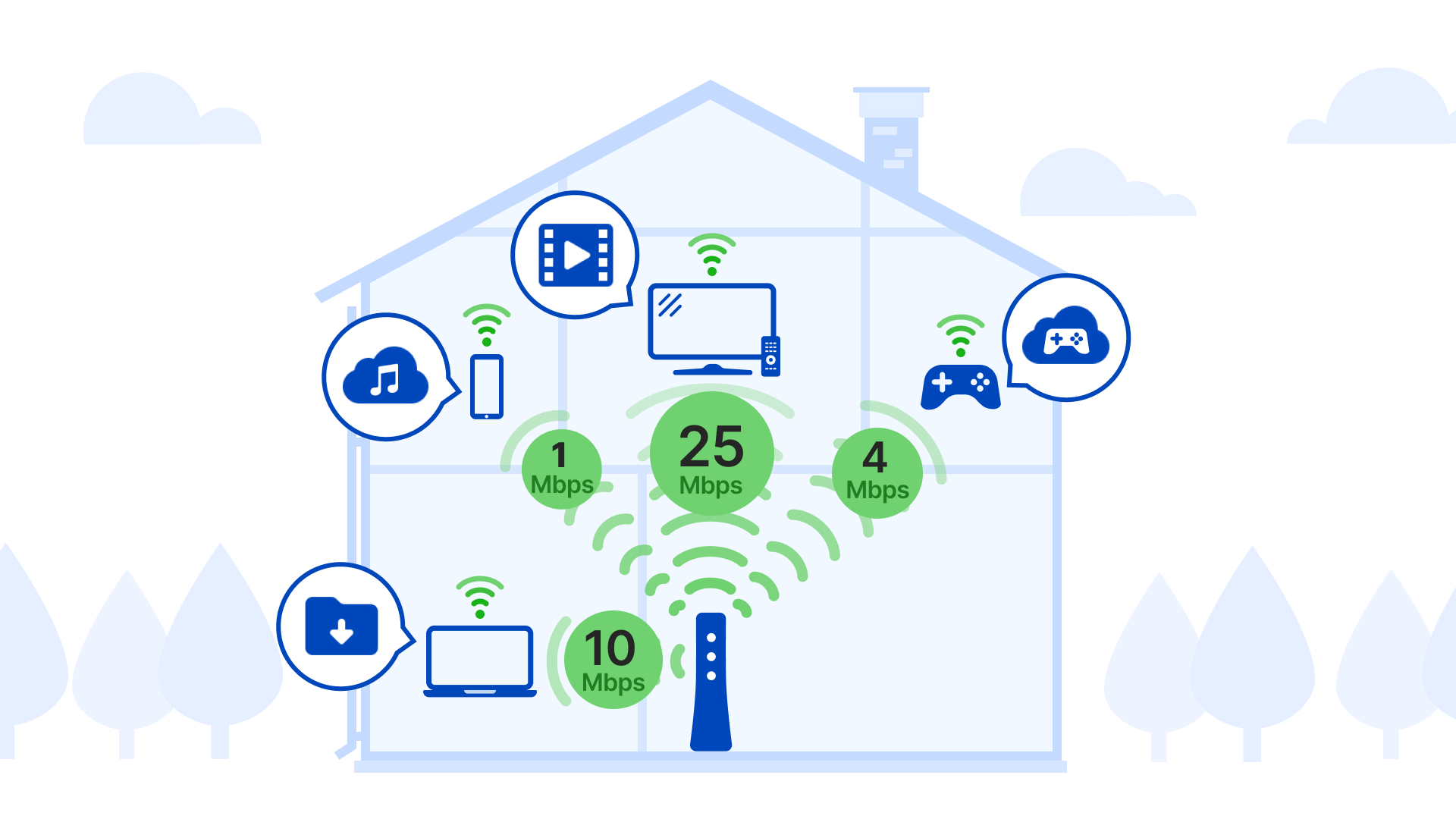Internet Speed Test
Get upload and download speeds
Check speed to your device




-
 MbpsDownload Speed
MbpsDownload Speed -
 MbpsUpload Speed
MbpsUpload Speed -
 msPing
msPing
Below are recommended speeds for common activities. Get more details about what internet speed you need for different activities.
Online activity |
Recommended bandwidth* |
| Streaming music | 2 Mbps |
| Browsing the web, email, social media, shopping | 3 Mbps |
SD video streaming |
3 Mbps |
HD video streaming |
5 Mbps |
| HD video chatting | 10 Mbps |
| File downloads | 10 - 50 Mbps |
4K video streaming |
15 Mbps |
| HD online gaming | 25 Mbps |
Remote work/learning |
50 Mbps |
| 4K online gaming | 100 Mbps |
Large file downloads (e.g. game files) |
100 - 150 Mbps** |
* Indicates minimum recommended bandwidth required for each device to perform this activity. Each device activity takes away from total available bandwidth.
** Higher bandwidth is recommended for very large files to reduce download times. For instance, some games can be 60 GB or more.
Source: Federal Communications Commission (FCC) Broadband Speed Guide
Note: Values shown reflect download bandwidth. Megabits per second (Mbps) is the standard measure of internet bandwidth and speed.

The internet speed test starts by identifying the network server that is closest to you. You will see the name in the lower right-hand corner of the testing window.
A "packet" of information is sent from your device to the server and back. The amount of time it takes for that information to make the trip is your ping. Next, the speed test downloads and uploads a packet of data over that connection. How quickly your internet can transfer that data from the network to your device and from your device back to the network determines your download and upload speed.
This speed is measured to and from the device you are using to run the test, which means the type of connection has a big impact on the result. Speed to your device may vary greatly depending on whether you have a wired or WiFi connection. Over a WiFi connection, speed to your device may vary greatly depending on how close your device is to your WiFi point, as well as any obstructions or distance in between. On the other hand, a wired (Ethernet) connection from the device straight to the modem will be about the same as the network speed to your home or building.
Ping, also called latency, is the amount of time it takes for your network to transfer information from your computer to a remote server and back. There will always be some latency over your network, but the lower this number, the better your performance will be. Online gamers especially want to keep an eye on ping, as high latency can lead to a noticeable delay between your actions and the actions of other players.
Learn what else to consider for online gaming.
Was this information helpful?
Support topics






